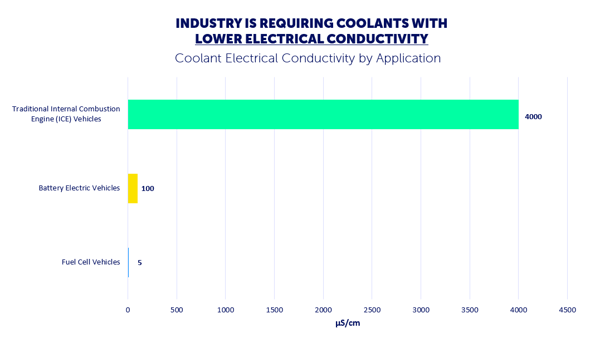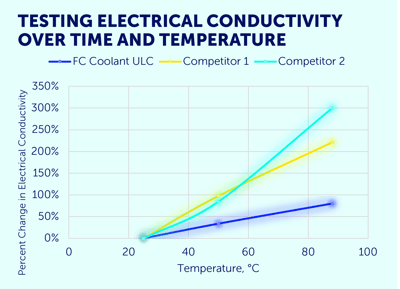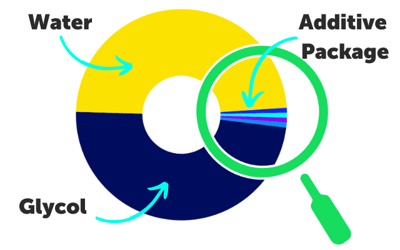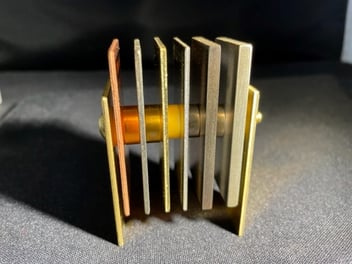5 Things You Need to Know About Fuel Cell Coolants
We've written about the shift to electric vehicles and those newer vehicles' coolant needs — but what about fuel cell vehicles and fuel cell coolants?
The automotive industry is making a shift from the traditional internal combustion engines (ICE) of old to new-energy vehicles. Just as battery electric vehicles have their own set of coolant needs, there are a number of considerations that come into play when formulating a fuel cell coolant.
In a nutshell, a coolant's purpose is to transfer heat that builds up in an engine so that it can continue to function properly. The exact mechanism and chemical makeup of the coolant, however, has changed as automakers have developed the aforementioned new-energy vehicle technologies.
The next generation of fuel cell coolants is built on the foundation of a century's worth innovation for internal combustion engines. However, there are some key changes to note when it comes to fuel cell coolants.
We outline some of those changes in our free e-book download, available below.
Download: Fuel Cell Coolant E-Book-1.png?width=413&height=245&name=FC-Ebook-thumbnail%20(2)-1.png)

Let's summarize five things you should know about fuel cell coolants:
Fuel cell coolants require ultra-low electrical conductivity
To put things into perspective, consider the chart below:

In short, the nascent fuel cell industry is requiring electrical conductivity levels that come in even lower than the already-low levels for battery electric vehicles.
The current electrical conductivity requirement for fuel cell coolants comes in at less than 5 microsiemens per centimeter. Where electrical conductivity expectations are concerned, fuel cell coolants and internal combustion engine coolants are not even in the same ballpark, let alone the same county.
That last point is particularly important, as we are seeing a shift in the commercial trucking industry from diesel to hydrogen-powered fuel cell technology. It won't happen overnight, but it is happening.
If you retrofit those commercial trucks with fuel cell stacks (or have a brand-new fuel cell vehicle), they need to be serviced with a fuel cell coolant that is up to the challenge of ultra-low electrical conductivity.
With that said, the absolute value of electrical conductivity is far from the only consideration when it comes to a fuel cell coolant.
Electrical Conductivity Over Time and Total cost of ownership
Electrical conductivity shouldn't be viewed as a static number. You need to consider the electrical conductivity of your fuel cell coolant over time and temperature. 
That means you need a coolant that has been tested under actual temperature of a fuel cell vehicle, which rises as the fuel cell works harder.
In short, you do not want to see significant fluctuation in the electrical conductivity as the temperature rises from 25 degrees Celsius, to 50, to 90 and so on.
The takeaway here is you're looking for sustained low electrical conductivity. If your fuel cell coolant meets the spec of <5 microsiemens per centimeter at 25 degrees Celsius but drops out of it when the temperature rises to over 80, you could have several problems, including a deleterious increase of ions in your system. More ions means the deionization filter has to work harder and, over time, will need to be replaced sooner.
Total Cost of Ownership (TCO) is a phrase you might have already seen in this space. Of course, fuel costs accounts for a significant percentage of TCO. However, with a coolant offering stable electrical conductivity over time, you can bring that TCO down. A stable coolant will offer better durability over time and a longer lifespan for your fuel cell's deionization filter.
Water, Glycol Drive Cost — but You Need a Strong Additive Package
When it comes to coolant formulation, coolants are typically around 97% water and glycol. As such, these two ingredients will generally drive the cost of the coolant. Furthermore, these elements help drive the thermal conductivity of your coolant. You generally won't see much deviation in thermal conductivity from coolant to coolant, as that is a table stakes trait. Aas for glycol, that will go a long way toward determining your cost; you want a coolant supplier with a strong glycol supply chain to keep costs down.

However, your coolant's additive package is the so-called "secret sauce." While the additive package usually accounts for just 2-3% of a coolant formulation, it has an outsize influence on the formulation's performance.
Chief among those performance-related traits is corrosion inhibition. In some cases, you might find coolants meeting electrical conductivity specifications but falling short in corrosion inhibition. Doing so can be costly in the long run, as it increases your cost of maintenance if critical parts of your fuel cell stack are corroded.
Furthermore, particularly for the commercial trucking industry, that means downtime. The time spent procuring new parts to repair the vehicle means lost revenue for the business when the truck is not out on the road making long-haul deliveries. (This also applies to other fuel cell use cases, like last-mile delivery vehicles, buses, off-road machinery, etc.).
New Vehicles, New Materials, New Compatibility Requirements
Fuel cell vehicles are composed of a variety of materials that differ from those in internal combustion engines (and even from those in battery electric vehicles).
Standard ASTM D1384 testing, which is used to assess corrosion in key automotive metals, historically included things like cast iron and solder. However, you won't find those materials in fuel cell vehicles. Instead, you'll see stainless steel and aluminum alloys.
Whether you're a fuel cell stack manufacturer or a fuel cell vehicle manufacturer, you'll probably want to know: "are my components compatible with a given coolant?"
You can't just leave that to chance. You need a coolant that has been tested for compatibility with metals, elastomers/polymers and other materials that might be found in a fuel cell system.
The Dober performance fluids team has developed a growing database of material compatibility data including metals, elastomers and more. Given the variance in materials used in the still-developing fuel cell industry, however, there may be a material for which we haven't yet tested. Dober also tests materials for compatibility upon request.
No ASTM Fuel Cell Testing Standards (Yet)*
As noted in the previous section, ASTM testing standards for fuel cell haven't been codified just yet. *(Update: Since the publication of this article, ASTM published new test standards for electric vehicle coolants.)
They will come, eventually. In fact, Dober is an ASTM D15 committee member, so we are on the frontlines of those discussions.
For now, though, fuel cell coolant manufacturers have worked with the industry to develop specifications, particularly for electrical conductivity. In general, the industry has required electrical conductivity of <5 microsiemens per centimeter.
Of course, no testing standards specific to fuel cell doesn't mean that research and development stops. At Dober, we have developed a number of testing methods to mimic the fuel cell system and its conditions.
Among those is the aforementioned D1384 corrosion test. Dober conducts a modified D1384 test, swapping out solder and cast iron for relevant stainless steel and aluminum alloys.
For stainless, 304L and 316L are critical in fuel cell applications. As for aluminum alloys, you might see any of the following:
- Aluminum 6061
- Aluminum 3003
- Aluminum AC4C
- Aluminum ALDC12
- Aluminum 7075
- Aluminum 3A21
- Aluminum 5A05
- Aluminum 6003
The industry is still developing — it will continue to do so as testing standards are codified and manufacturers fine-tune their fuel cell technologies. That means the fuel cell coolants of today will likely see some changes in the years ahead.
Interested in learning more about Dober?
Our product line addresses the wide variety of coolant formulations used throughout the world and includes new energy coolants, both light-duty (automotive) and heavy-duty (diesel) coolants, rail, and marine applications. Each additive pack is extensively performance tested and meticulously designed for each application.
VIEW OUR PRODUCT CATALOG HERE


-1.png?width=352&name=PFD%20-%20Product%20Page%20-EV%20SLC%20(2)-1.png)
.png?width=352&name=PFD%20-%20Product%20Page%20-EV%20SLC%20(2).png)